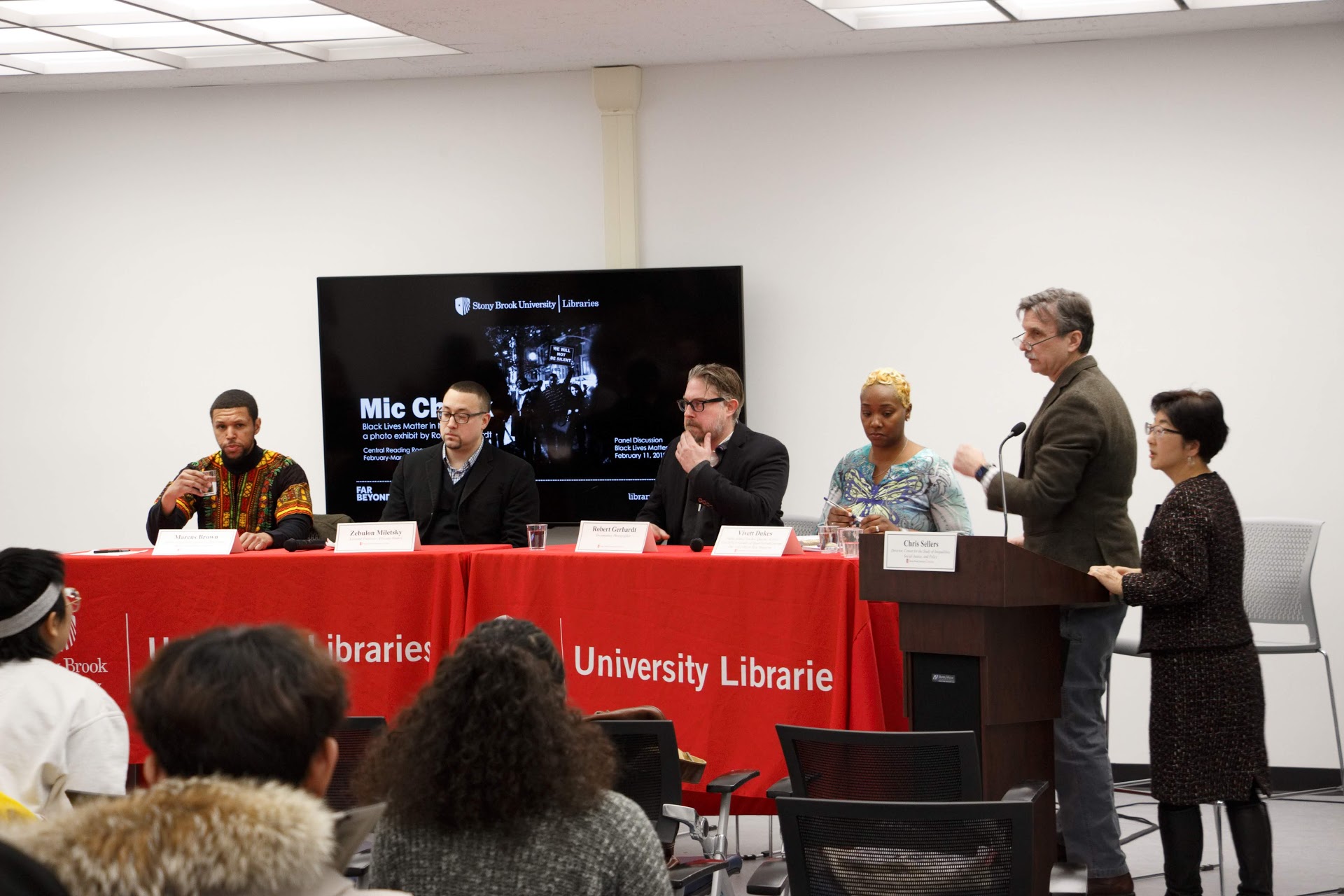The Center for the Study of Inequalities, Social Justice & Policy Director Christopher Sellers says his program is facing a shutdown because of budget cuts.
For the current fiscal year of 2018-2019, there has been no appointed budget for the Center. In the fiscal year of 2017-2018, they were given a total of $43,000 for funding. When the Senate approved the Center in the summer of 2017, they proposed a total of $65,000 for the Center’s operating budget, graduate assistance and conference expenditure.
The Center was approved in the summer of 2017 by Dean Sacha Kopp, who retired in the spring of 2018, and the faculty senate.
“We understood that we would have an annual budget and it was starting in fiscal year 2017-2018,” Sellers said. “A plan for the Center was run by the faculty senate and approved by it, with essentially that same assumption. What’s happened is that Dean Sampson has zeroed out the budget for this year and she has not appropriated any money for this year’s fiscal year… And then she will not be making any commitment on next year for any operating budget.”
The operating budget is how the Center is able to do programs; it’s how they pay for guest speakers’ travels and their participation in the Center.
“Money goes away for bringing in speakers,” Sellers added. The Center had to cancel a big event on April 4, which had two guest speakers: William Darity and Theodore Allen. It was intended to be an annual occasion, but due to budget cuts it was not able to be a one-time event. Allen would have talked about the subaltern middle class and Darity on education and inequality, but due to budget cuts this had to be canceled.
However, with the impending budget meeting at the end of the semester with the Dean of the College of Arts and Sciences (CAS) Nicole Sampson, the Center is facing severe budget cuts for the next fiscal year.
“[The Center is] concerned with contemporary causes, policy areas, dealing with what the contemporary problems and solutions are; getting the best perspectives on this as we can by bringing the experts, but also bringing in the people working on the issues in the field,” Sellers said.
 The Center has held programs for the border wall, Deferred Action for Childhood Arrivals (DACA) and Black Lives Matter. They work closely with community groups that work together at such events to fight for causes.
The Center has held programs for the border wall, Deferred Action for Childhood Arrivals (DACA) and Black Lives Matter. They work closely with community groups that work together at such events to fight for causes.
An example of this was when the Long Island Progressive Network and the religious social justice groups with Reverend William Barber collaborated. The Long Island Progressive Coalition, Long Island Jobs for Justice and ERASE Racism are other community groups that create a bridge between the community and academia.
Another piece in the puzzle that allows the Center to run are the working groups, which were created by the Center and are now used in the CAS, according to Sellers. These groups consist of faculty and graduate students working on similar issues.
“You have to have a team, you have to bring the faculty together to be part of the grant,” Sellers said.
“They develop projects of mutual interest and what enables those working groups to run are project liaisons that help me out; I can’t do all this myself. We’re losing that help and the ability to put on events unless they cost nothing. It’s a huge gap that potentially opens up on campus in terms of not having events like this anymore.”
Despite Sellers’ last attempts via email on March 22, 2019 to reach Dean Sampson, she refuses to meet with Sellers and his steering committee. Professor Sellers and Dean Sampson have been in brief contact in the past months but the last email that Sampson sent implied that she didn’t want to meet until the end of the semester during the budget meeting.
After personally reaching out to Dean Sampson about the Center’s budget, her Communications Manager Rachel Rodriguez wrote the following:
“Support continues for the Center for the Study of Inequalities, Social Justice and Policy’s interdisciplinary collaboration and development of initiatives to address topics that are important to our community. The work of the Center is important and exemplary of a public university, and as such, its leadership should embody the values of respect, collegiality, and collaborative responsibility.
Professor Christopher Sellers was provided a surplus account balance (Income Fund Reimbursable account) when he assumed leadership of the Center; the College of Arts and Sciences provided an additional $25,000 in seed funding (as many centers and institutes receive). These funds were provided to support initial operations and to build further additional external funding support. CAS provided additional funds to cover expenditures made before the Center’s financial position became apparent. These are expenditures that exceeded the Center’s original budget. The Center made commitments greater than the revenue available and the allocation provided.
Given the financial constraints facing the College and University, additional funds were unable to be allocated to the Center to support financial commitments made beyond its current budget.”
According to Sellers, the “surplus account balance” was “the money Michael Zweig had saved under our predecessor, the Center for the Study of Working Class Life. We had hoped that would serve as a reserve fund for us. But after taking it over in 2016 (without asking me or any negotiation), the Dean’s office required that we spend it down fully to cover this year’s expenditures before we asked for anything from the College in [fiscal year of 2018-2019.] Once I did so, and asked the Dean for more money in early March, that is when she first told me that the 25k from [fiscal year 2017-2018] was ‘one-time.’”
Sellers wanted to pitch a potential budget plan to Dean Sampson which he called a two-year alternative plan, “a tapered dropdown of funds.” He plans to maintain the Center at a lower level of funding and see what they can do about grants.
This also brings up the Howard Bunsis report done on Stony Brook University’s financial standing, which claims that the school has been in a positive net flow for about 10 years so far.
The consequential option Sellers proposed would be to try raising their own money as a self-sustaining Center. They would then just look for grants and projects that award grants.
“It’s a science model; that’s how science centers run. I don’t think that model works in the social sciences, humanities and public issues — it just doesn’t,” Sellers added.
If the Center were to fundraise to sustain itself, it would give up the programs and the public discussions that it has brought to campus. The Center is faculty-driven and run in a horizontal work model, which promotes an equal teamwork-based environment, as opposed to top-down management, where upper executives make decisions for the workers under their management.
The Center’s first event was on the border wall and what it means for greater New York.
“We combine activists: people working in these organizations like Long Island Immigration Coalition and Civil Liberties Union with an academic perspective,” Sellers said. “We try mixing activists and social cause groups and leaders with academics…It brings on campus the kind of event that is not really what the Humanities Institute does, not really what any other center on campus does.”
Seller contrasted the Center with the HISB, regarding the center’s different goals. The Humanities Institute’s mission statement is as stated on its website, “The Humanities Institute at Stony Brook was established in 1987 to promote interdisciplinary research and collaboration across the university. Through conferences, lectures, seminars, workshops, exhibitions, film series, and performances, HISB draws on and stimulates new knowledge at the cutting edge of intellectual life.”
The Center focuses on interdisciplinary collaborations with faculty and students of different departments: history, sociology, Africana studies, political science, economics and social welfare.
The Center holds events and meetings regarding issues on the topics of social justice, environmental issues, working class politics and labor, racial justice, jails, incarceration, gun violence and immigration.
The four graduate students who work at the Center had been laid off due to budget cuts, since there is no money left to pay them. Although they lost their jobs, these graduate students are teaching assistants as well.
The proposed budget meeting is due in May or June as the business affairs calendar for the College of Arts and Science states that the deadline for the “Next fiscal year IFR allocation worksheet due to Dean’s office” is on the third week of April. The last day of the fiscal year for the College of Arts and Sciences is on June 30. There is no specific date but Sampson will announce the proposed budget plan at the meeting coming toward or after these dates.




Comments are closed.